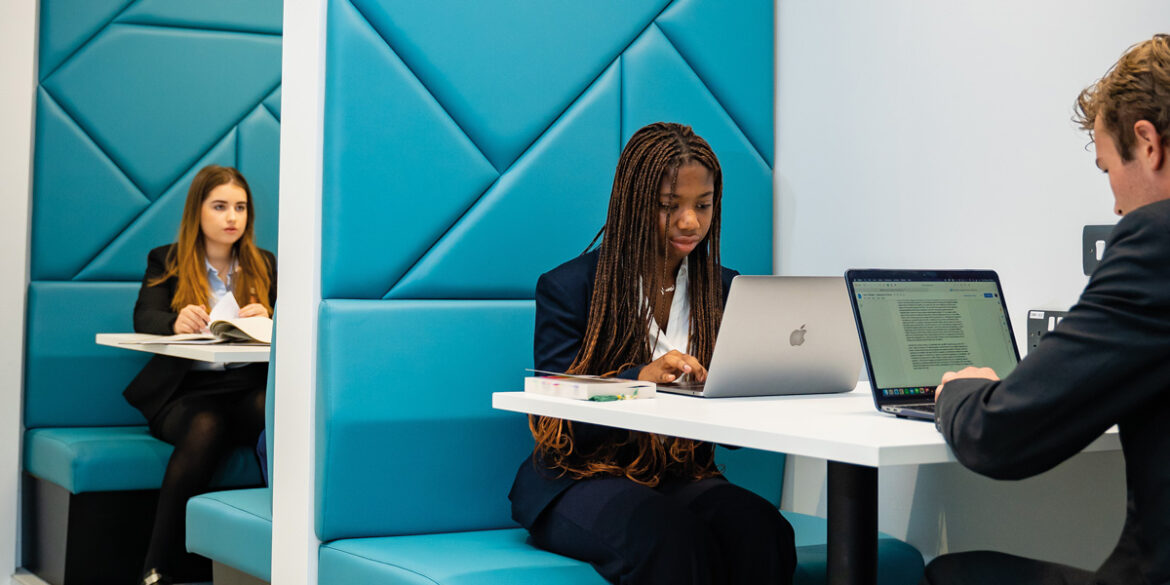Does architecture affect education?
Felsted School unpacks the impact of architectural design in creating a dynamic environment conducive to learning
Sitting down for lessons is something pupils at Felsted are gradually getting used to not doing in the school’s new state-of-the-art learning centre.
The latest research into teaching and learning suggests pupils are happier and learn better when they’re able to move around and think creatively in lessons.
So, when a new classroom block was on the drawing board at Felsted, the co-educational independent day and boarding school in the north Essex countryside, this futuristic approach to learning was at the heart of the architect’s design brief.
The result is a new contemporary glass and metal building on the school’s 80-acre campus, which has proved a big hit with teachers and pupils alike since it opened last year.
Each of the ten classrooms in the new Marshall Centre for Learning is extremely spacious, and two even have removable walls that allow teachers to create a larger space to suit the task being carried out in the lesson.
“Our aim is to make sure there are elements of lessons that allow our pupils to move around, because that really helps to get their brains working,” explains Chris Townsend, the school’s head.
“They say they also feel much more relaxed and less contained than they would if sitting at a desk all day, and we know that is great for their wellbeing.”
In the evenings, the Marshall Centre becomes a base for the school’s boarders to study in their own preferred way, safe in the knowledge that subject specialist teachers are on hand to help if needed.
Particularly useful for this are the high-tech writable walls in each classroom, as well huge interactive screens. They are also welcome to sit comfortably and chat in workplace-inspired break-out rooms and open social areas on each of the building’s two floors.
“We know that when pupils collaborate, they can take their ideas further and achieve bigger and better things,” says Chris, “so the design of the building is important in creating the right working environment for them.”
Of course, being able to learn independently is also crucial, so several corners of the Marshall Centre are furnished with high benches and stools – coffee shop style. Several ‘learning pods’ are featured too; these are much more enclosed and therefore quieter, to help pupils to focus.
Pupils are pleased to know that the Marshall Centre has a minimal impact on the environment, thanks to a low-energy lighting system and low-carbon natural ventilation.
It was designed by architect John Squires and Stuart Cadman, managing director of Cadman Construction, and funded through a bequest from a former student. The building is named in his honour.
Felsted School is an independent day and boarding school for boys and girls aged four to 18 – for more information visit felsted.org

